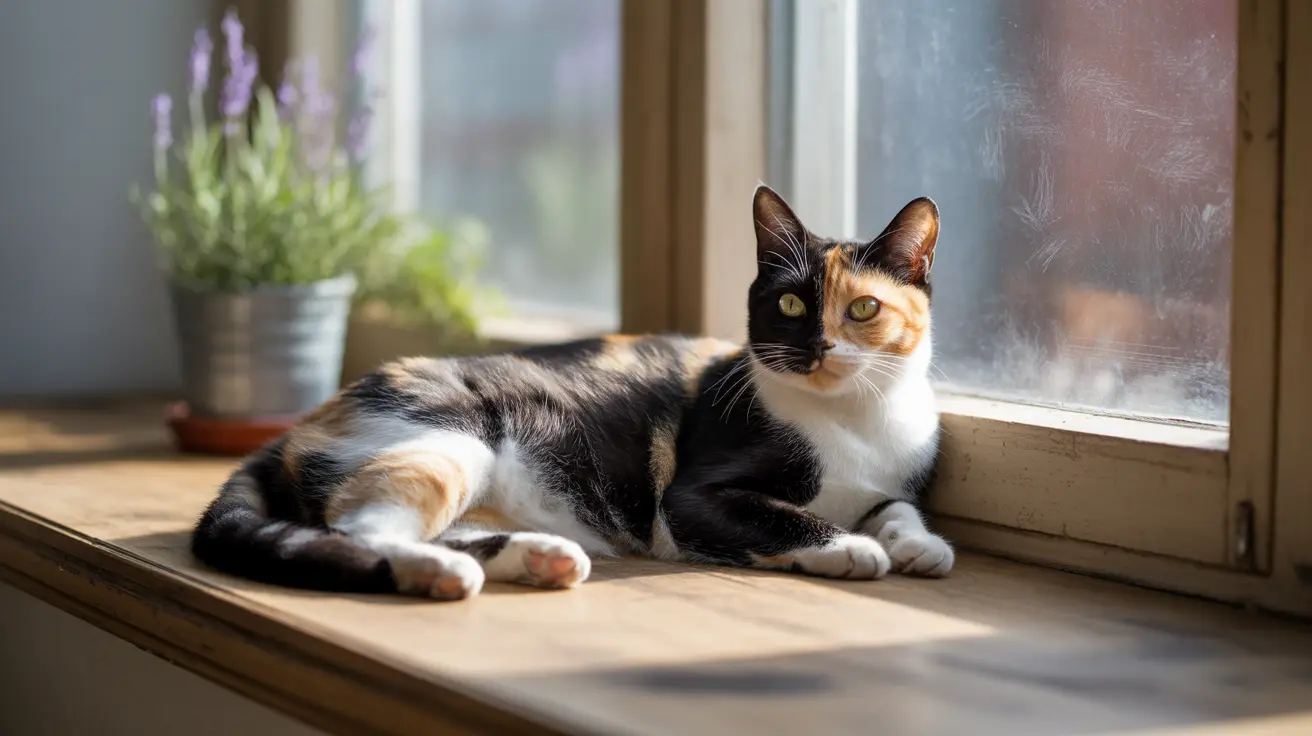When it comes to the fascinating world of feline genetics, few topics are as intriguing as the gender distribution among calico cats. These striking tri-colored cats, known for their distinctive patches of orange, black, and white, hold a remarkable secret: the vast majority of them are female.
In fact, more than 99% of all calico cats are female, making male calicos one of the rarest genetic occurrences in the feline world. This extraordinary gender disparity isn't random - it's deeply rooted in feline genetics and chromosomal structure.
The Science Behind Calico Cat Gender Distribution
The reason why almost all calico cats are female lies in their genetic makeup. The genes responsible for orange and black fur colors are located on the X chromosome. Female cats have two X chromosomes (XX), allowing them to express both colors along with white (controlled by a separate gene), creating the characteristic calico pattern.
Male cats typically have only one X chromosome and one Y chromosome (XY), which means they can usually only express either orange or black coloring, but not both simultaneously. This chromosomal arrangement makes it virtually impossible for normal male cats to display the calico pattern.
The Rare Male Calico
The few male calico cats that do exist - approximately 1 in 3,000 - are the result of a genetic anomaly called Klinefelter syndrome. These cats have an extra X chromosome, giving them an XXY configuration instead of the typical XY. This rare genetic condition allows male cats to express both orange and black fur colors, creating the calico pattern.
However, this chromosomal abnormality comes with health implications. Male calicos are almost always sterile and may face various health challenges throughout their lives, including a higher risk of diabetes and reduced immune function.
Understanding Calico Patterns and Genetics
The unique patching pattern seen in calico cats results from a process called X-chromosome inactivation or lyonization. In female cats, one X chromosome becomes randomly inactive in each cell during early development. This random inactivation creates the distinctive patches of color that make each calico cat's coat pattern unique - like a feline fingerprint.
The white portions of a calico's coat are controlled by a separate gene unrelated to gender, which determines where pigment-producing cells migrate during development. This creates the characteristic three-color combination that makes calicos so visually striking.
Cultural Significance and Value
Despite their rarity, male calico cats don't typically command higher prices in the pet market due to their inability to breed. However, these cats are often considered special by veterinarians and cat enthusiasts due to their unusual genetic makeup.
In some cultures, calico cats are considered lucky symbols. The state of Maryland even designated the calico cat as its official state cat, celebrating the unique color pattern that mirrors the colors of the state bird and butterfly.
Frequently Asked Questions
What percentage of calico cats are female versus male?
More than 99% of calico cats are female, with males representing only about 0.03% of the calico population (roughly 1 in 3,000 calicos).
Why are almost all calico cats female from a genetic standpoint?
The calico coloring requires two X chromosomes to express both orange and black fur colors. Female cats naturally have two X chromosomes, while males typically only have one X chromosome, making the calico pattern almost exclusively female.
How can a male cat have a calico coat pattern if they usually cannot?
Male cats can be calico only if they have an extra X chromosome (XXY configuration) due to Klinefelter syndrome, or in extremely rare cases, through chimerism or genetic mutations.
Are male calico cats sterile, and what health issues might they face?
Yes, male calico cats are almost always sterile due to their chromosomal abnormality. They may also face health issues including diabetes, reduced immune function, and potential heart defects.
What causes the unique tri-color patches in calico cats' coats?
The patches result from X-chromosome inactivation (lyonization), where one X chromosome is randomly inactive in each cell, combined with a separate gene that controls white spotting.
Understanding the unique genetics behind calico cats helps us appreciate these remarkable felines even more. While male calicos may be exceedingly rare, every calico cat - regardless of gender - represents a fascinating example of genetic complexity in the animal kingdom.






